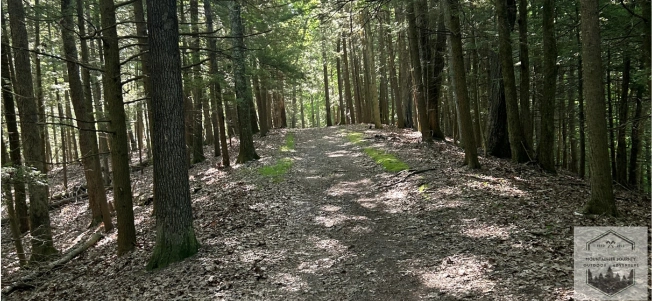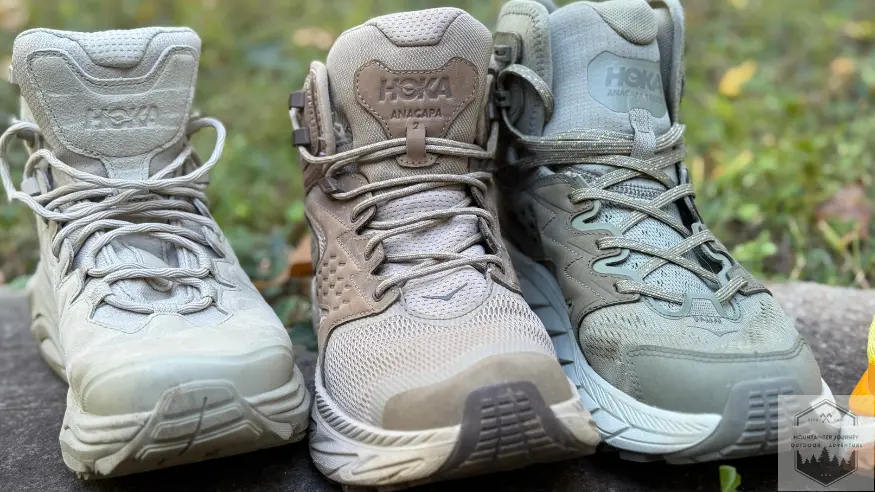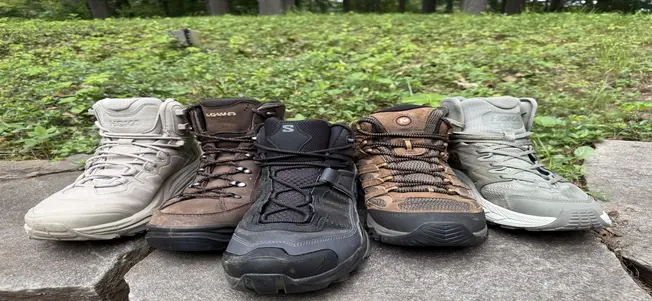Hiking for Beginners | Top Tips for an Enjoyable First Adventure

If you’re just beginning to hike and wondering how to begin, it’s important for beginners to be well-prepared by selecting simple trails, ensuring they have the appropriate gear, and planning thoroughly. Follow this guide packed with vital advice so your initial hiking experience is both enjoyable and secure.
Key Takeaways
Find a hiking partner through friends, local groups, or online platforms to make your first hike safer and more enjoyable.
Start with well-researched, beginner-friendly trails that match your fitness level and time, and always check weather and trail conditions.
Equip yourself with the Ten Essentials, comfortable footwear, and proper clothing to ensure a safe and enjoyable hiking experience.
Getting Started with Hiking

Embarking on the adventure of hiking combines exploration and peace as you immerse yourself in the splendors of the natural world while participating in beneficial exercise. For those ready to start hiking, it may seem intimidating at first, but with some forethought and readiness, anyone can venture out onto a hiking trail and delight in traversing an array of paths.
Beginner hikers should focus on three key actions: securing a companion for hikes, pinpointing appropriate beginner trails suited to their abilities, and obtaining necessary equipment.
If you’re just starting as beginner hiker, initiating your journey with shorter routes that range from 2-5 miles will help foster stamina and self-assurance before moving onto longer or more complex trails. By adhering to these steps, novices can ensure they have positive introductory experiences into the realm of hiking.
Finding a Hiking Partner

Embarking on your initial hiking journey is often far more pleasant and secure with the company of a hiking partner. Such a companion not only offers encouragement but also assists in resolving queries and addressing any issues that might occur while navigating the trail.
For those seeking to find hiking buddies, one useful approach is reaching out to friends who are already into hiking, as they can provide valuable insight and introduce you to their beloved trails. In my personal experience, I have always enjoyed my hikes more with a hiking partner.
Should your own circle of friends not share this interest in trekking through nature’s paths, fear not! There exists an abundance of alternative methods for locating potential hiking partners.
- Numerous urban areas or smaller locales exist organizations such as hiking clubs which regularly schedule hiking groups.
- Leveraging online networks including social media platforms provides access to local groups dedicated to outdoor enthusiasts. Sites like Facebook or applications designed for meetups offer channels through which fellow hikers may be contacted.
- Providers of outdoor gear like REI frequently conduct educational sessions along with accompanied excursions tailored specifically towards novice walkers looking both to learn about safe practices and connect with others sharing similar interests in exploration by foot.

Choosing the Right Trail
It’s essential to pick the appropriate trail for a delightful hiking experience. Take into account how much time you have, your physical fitness level, as well as the distance and elevation gain of the trail when making your choice. For those new to hiking, trails ranging from 2-5 miles with only minimal elevation gain are usually recommended.
Detailed information on various factors including trail conditions, distances covered by different routes, and their difficulty levels can be found using resources such as AllTrails and Hiking Project. You can look up specific beginner hiking trails in your area.
This information is beneficial in locating trails that cater specifically to beginner hikers. Guidebooks and websites along with advice from friends or local residents can point you towards some of the finest trails around.
Before embarking on your adventure outdoors, ensure that you review both current weather forecasts and trail conditions so that you are guaranteed a hike that is not just enjoyable but also safe.
Hiking Essentials For Beginners

Embarking on a hiking adventure requires the right equipment to promote both safety and enjoyment. While it might seem appealing to purchase all sorts of new hiking gear, starting with what you already own is perfectly acceptable.
As your trail experience grows, so can your gear collection. Initially prioritize acquiring the Ten Essentials as well as ensuring you have appropriate footwear and attire.
These Ten Hiking essentials are a checklist I go through in my head before heading out on my trip.
The Ten Essentials
On the trail, the Ten Essentials serve as your reliable partners, equipping you to handle any unforeseen circumstances. They encompass:
- Tools for navigation such as maps and compasses
- Sun protection gear including sunscreen and a hat
- Additional insulation clothing for warmth
- A headlamp or flashlight
- A fundamental first aid kit
- Snacks for energy sustenance
- Adequate water supply
- Fire-starting implements like matches or a lighter
- A multifunctional tool
- Emergency shelter options such as space blankets
Carrying these items consistently can enhance not only your own safety and enjoyment on hikes, but also that of other hikers sharing the trail with you.
Selecting Hiking Footwear

Choosing the right footwear is essential for a pleasurable hiking experience, and you have multiple options to consider. Hiking boots are known for their robust support and defense, which makes them an excellent option for novices tackling rugged or inconsistent trails. My favorite go-to for hiking beginners are the Merrell Moab 3 or Hoka Kaha 2 GTX.
For those who fancy a quicker pace on well-kept paths, trail runners offer a light and airy solution. Even sturdy tennis shoes might suffice for short excursions on simple terrain.
No matter your choice of shoe type—be it hiking boots, trail runners, or tennis shoes—it’s crucial they’re properly broken in before embarking on any hikes to circumvent blisters and unease during your adventure.
The pursuit of comfort should be paramount. Hence dedicating time to secure footwear that snugly fits while delivering sustained ease over considerable stretches is indispensable.
Proper Clothing for Hiking

When selecting attire, opt for materials like wool or polyester that have quick-drying and moisture-wicking properties. Such fabrics are ideal for maintaining comfort and dryness across a range of activities.
They aid in managing your body heat effectively under fluctuating weather conditions. Cotton is not recommended because it dries slowly once wet, which can be hazardous in cold temperatures.
The strategy of layering clothing is crucial. Employ a foundational layer close to the skin, add an insulating middle layer, and top off with a waterproof exterior shell to ensure readiness against any climatic changes.
Preparing for Your Hike

Proper planning is the key to a successful hiking trip. Prior to embarking, you should:
- Review both trail conditions and weather forecast to steer clear of unforeseen issues
- Bring enough food and water with you so that you can maintain your energy levels and hydration during your hike
- Strategically map out your path by utilizing guidance from hiking apps or guidebooks, securing a safe experience while ensuring that you remain on course.
Let’s delve deeper into these preparatory measures now, making sure that when adventure calls, you are thoroughly ready for what lies ahead.
Checking Weather Conditions
Before setting off, it’s important to consult the weather forecast and any alerts from the park. Doing so will equip you with information about possible dangers such as storms, rain, or severe heat or cold. To get a clear picture of the conditions you might encounter, track the daily weather for seven days prior to your hike.
Should there be predictions of rainfall on your hiking day, remember to bring along a poncho or rain jacket in order to remain dry.
Packing Food and Water
Maintaining hydration and energy is crucial for a productive hiking experience. Consider these guidelines:
- Carry a minimum of half a liter of water for each hour you plan to hike
- Choose light, nutritious snacks that will sustain your energy throughout the trek
- Schedule snack breaks periodically to help regulate your pace and enhance the enjoyment of your hike. Dehydrated bannanas and apples are excellent choices
Planning Your Route
Preparing your hiking journey is essential. Utilize platforms such as AllTrails for planning and recording your adventure, which can offer insights into various aspects like distance, trail conditions, and elevation gain of the route. It’s wise to carry a physical copy of the trail map too. Technology might fail if cell service becomes unavailable.
Make it a point to inform a reliable contact about where you’ll be hiking along with when you plan on returning. This precaution ensures rapid assistance should an urgent situation arise.
When confronting routes that involve substantial elevation gains within your hike, budget additional time to navigate the trail successfully.
Hiking Safety Tips

When embarking on a hike, it is crucial to prioritize safety. To ensure a more secure and pleasant hiking adventure, be prepared for any possible dangers that could arise during your journey. Opting to hike with another person or within a group not only boosts safety but also offers companionship along the way. It’s important to adhere to trail etiquette, remain conscious of wildlife in the area, and always have an aid kit handy.
As we examine these guidelines for safe hiking, our objective is to equip you adequately for whatever obstacles you may encounter on the trail.
Trail Etiquette
Maintaining proper trail etiquette ensures a delightful experience for all hikers. Adhere to the Leave No Trace principles by removing all your trash and showing respect for nature. Be considerate of other hikers, speak softly, and give way to those hiking uphill.
Wildlife Safety
To ensure wildlife safety, it’s essential to be knowledgeable about the animals in the area and always keep a respectful distance from them. When hiking, create noise to prevent startling any creatures and secure your food adequately to deter curious wildlife.
Steer clear of applying heavy fragrances that could pique an animal’s interest. In preparation for any unexpected meetings with fauna, stay composed and retreat slowly if you find yourself needing to do so.
First Aid and Emergency Preparedness
Having a first aid kit on hand and being versed in fundamental wilderness first aid techniques could be crucial to survival. To enhance your outdoor safety proficiency and self-assurance, you might consider enrolling in a course that covers wilderness first aid.
Create a contingency strategy for handling situations where you or those you are hiking with get hurt or lose their way. In case of emergencies, especially within regions lacking cell phone coverage, it’s also advisable to consider the use of personal locator beacons.
Hiking with Family and Pets

Embarking on a hike with your loved ones and furry friends can be deeply fulfilling, instilling an appreciation for the outdoors while building enduring memories. Distributing tasks among family members and involving children in natural explorations enhances the pleasure of the journey for all participants.
It is equally crucial to prioritize pet security by carrying snacks and maintaining their identification current. One of my favorite aspects of hiking is being able to bring my dog with me.
Let us offer some tips on transforming hiking into an enjoyable activity for both youngsters and animals.
Hiking with Kids
Embarking on a hiking adventure with children offers an excellent opportunity to bond with the natural world and instill environmental awareness. To guarantee everyone has an enjoyable time, consider these strategies.
- Opt for trails that are not challenging
- Maintain modest expectations
- Involve the kids by playing observational games such as ‘I Spy’
- Motivate them to be vigilant about observing animals in their habitat
- Ensure little ones wear attire that is cozy and made from light materials, and remember to pause regularly during your hike to sustain its pleasantness.
Training for Hiking
Ensuring physical preparedness is crucial for an enjoyable and successful hiking adventure. Participating in consistent exercises, including walking or gentle hikes, is beneficial for developing muscular strength and stamina. It’s important to evaluate your current level of fitness and engage in targeted workouts that can enhance your capabilities as a hiker.
In the following discussion, we will explore methods to determine your fitness standing and identify the most efficient training techniques tailored for those who hike.
Establishing Fitness Levels
To get ready for a hiking adventure, it’s crucial to assess your existing level of fitness. Follow these guidelines as you initiate this process.
- Begin with hikes that are not too challenging and include variations in altitude.
- Notice the aspects of these initial hikes where you find difficulty.
- Progressively tackle more demanding trails to cultivate both stamina and self-assurance.
For developing muscle strength, activities like walking, gentle slopes on easier trails, and ascending stairs can be highly beneficial weight-bearing exercises.
Exercises for Hikers
Integrating targeted workouts into your regimen can greatly improve your fitness for hiking. Begin with gentle-intensity activities such as walking or swimming, and gradually increase to a duration of 30 minutes engaging in moderate-intensity cardiovascular exercise. Aerobic interval training that involves brief periods of intense activity can enhance both your pace and stamina on the trails.
It’s important to conduct warm-up exercises prior to beginning your sessions and cool-down activities following them, which helps in averting injuries and facilitating muscle recovery.
Additional Tips for New Hikers

When embarking on your hiking adventure, there are some key suggestions to enhance the pleasure of your excursion. It’s crucial for hikers, especially new ones, to manage their energy by setting a sustainable pace and pausing as necessary.
This strategy prevents exhaustion while allowing you to relish in the landscapes and sustain vigor throughout your expedition.
It is also beneficial to comprehend how solo hiking differs from its group counterpart so that you can make an informed decision about which suits you best. Hiking alone gives a unique sense of liberty and intimacy with nature. It demands vigilant safety measures.
Conversely, trekking with others offers fellowship and collective accountability – factors that can be encouraging for those who are just starting out in their hiking pursuits.
Avoiding Burnout
To prevent exhaustion, it’s crucial to take regular pauses and pay attention to your body’s signals. Maintaining a pace that feels easy while hiking not only wards off fatigue, but also enables you to truly enjoy the scenic vistas and animals around you.
Adopting this strategy guarantees that your time spent hiking continues to be both pleasurable and rewarding.
Solo Hiking vs. Group Hiking
Solo hiking offers a unique opportunity for introspection and a deeper connection with nature. However, it’s important to start with short trips like a day hike to popular destinations and always inform someone of your plans to ensure your safety. Over time, as you gain more experience and confidence, you can venture into more remote areas.
Group hiking, on the other hand, provides a supportive environment where you can share the experience with others. This can be especially beneficial for beginner hikers who may feel more comfortable exploring new trails with companions. Whether you choose to hike alone or with a group, the key is to enjoy the journey and stay safe.
Budget-Friendly Hiking Tips
Embarking on hiking adventures doesn’t have to strain your wallet. To economize, you can:
- Utilize any suitable equipment you already possess
- Slowly accumulate specialized hiking gear as you gain proficiency
- Seek out deals and reduced prices on hiking equipment
- Think about lending gear from those in your social circle who share the interest
A wealth of complimentary tools is at your disposal online. Trail maps and guidebooks are readily accessible and can assist in organizing your treks without necessitating substantial expenditures. By leveraging these cost-effective strategies, the joys of hitting the trails come with minimal financial impact.
Summary
In summary, starting your hiking journey can be a rewarding and enriching experience. By finding a hiking partner, choosing the right trail, gathering essential gear, and preparing thoroughly, you set yourself up for a successful adventure. Safety, fitness, and enjoyment are key components that ensure you have a great time on the trails.
Remember, hiking is about the journey as much as the destination. Embrace the process, enjoy the natural surroundings, and take pride in each step you take. With the knowledge and tips provided in this guide, you’re well on your way to becoming a confident and capable hiker. Happy trails!
Frequently Asked Questions
What should I do if I encounter wildlife on the trail?
Should you come across any animals while on the trail, maintain your composure, create some noise to alert them of your presence, and cautiously retreat to keep a safe distance. Refrain from using potent fragrances which could draw wildlife towards you.
How much water should I bring on a hike?
Especially on hot days, it’s critical to carry a minimum of 0.5 liters of water for every hour that you’ll be hiking in order to maintain adequate hydration levels. It is advisable to pack extra as having surplus is preferable than running short.
How do I find beginner-friendly hiking trails?
Utilize platforms such as AllTrails and Hiking Project, along with guidebooks or suggestions from acquaintances and local residents to discover hiking trails suitable for beginners.
What should I wear for hiking?
Opt for garments made of wool or polyester that are designed to dry quickly and wick away moisture when embarking on a hiking trip, in order to maintain comfort. It is advisable to steer clear of cotton because it retains water for an extended period once wet.
In my personal experience, I always wear moisture wicking clothes whether it is hot or not. Employ a three-layer clothing strategy tailored to accommodate fluctuating weather patterns during your outdoor adventures.
Adventure Awaits,
Tyler






